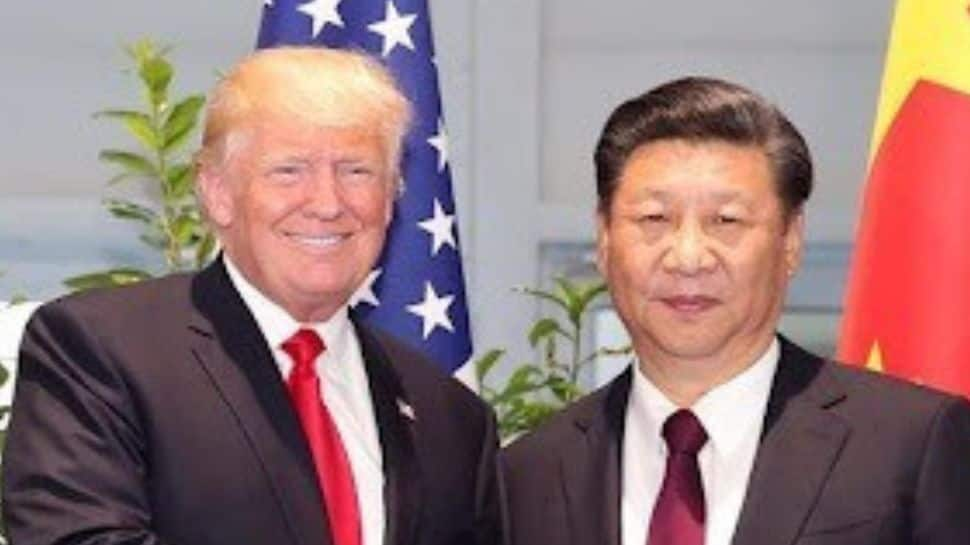On Thursday, US President Donald Trump and Chinese President Xi Jinping met in Busan, South Korea, on the sidelines of the Asia-Pacific Economic Cooperation (APEC) summit held in nearby Gyeongju. This high-profile meeting marked a significant step toward easing the persistent economic tensions between the world’s two largest economies, Washington and Beijing. Both leaders engaged in discussions aimed at resolving long-standing trade disputes and fostering cooperation on several complex issues, signaling a hopeful thaw in US-China relations after years of friction.
One of the most notable outcomes of the summit was President Trump’s announcement of a substantial reduction in tariffs imposed on Chinese goods. The tariffs, which had previously been set at 57%, were lowered to 47%, indicating a meaningful concession from the United States. This tariff rollback is part of ongoing efforts to ease the trade war that has disrupted global markets and strained relations between the two countries. Alongside this, Trump also revealed an immediate reduction in tariffs on fentanyl imports from China, cutting the rate from 20% to 10%. This decision came after China committed to intensify its crackdown on fentanyl exports, a major concern for the US due to the opioid crisis exacerbated by illegal fentanyl entering American markets. The agreement on fentanyl represents a significant breakthrough in the negotiations and highlights a rare area of collaboration beyond purely economic matters.
President Trump described the talks as a “great success,” expressing optimism about the progress made during the summit. He further announced plans to visit China in April 2026 to continue building on the momentum generated by this meeting. This scheduled visit underscores a mutual interest in deepening dialogue and cooperation between the two countries in the coming years.
The meeting took place against a backdrop of heightened tensions that have characterized US-China relations for months. Earlier in the month, China had tightened export controls, while the US warned of potential restrictions on software exports to China, exacerbating the strain. These moves had raised concerns about a possible escalation of the trade war, which has already involved tariffs on hundreds of billions of dollars’ worth of goods, disputes over technology access, and issues related to supply chain security. However, Trump’s declaration that the trade dispute has been settled suggests a significant shift from confrontation toward cooperation, potentially stabilizing economic ties and benefiting global trade.
When journalists pressed President Trump on whether the sensitive topic of Taiwan had been discussed during the meeting, he clarified that it “never came up.” The focus remained strictly on trade and cooperation, avoiding any mention of geopolitical flashpoints. This omission indicates a deliberate effort by both leaders to keep the dialogue centered on economic issues, perhaps to prevent derailment of the fragile progress being made.
Another important issue addressed was the matter of rare earth elements, critical components used in various high-tech applications. Trump announced that this issue had been fully resolved, describing the agreement as “a deal for the world.” He added that the terms of this arrangement would be reviewed and renegotiated annually, ensuring that both countries maintain a balanced and sustainable partnership in this vital sector.
Beyond trade, the talks also ventured into international security concerns, particularly the ongoing war in Ukraine. President Trump revealed that he and President Xi Jinping had agreed to cooperate on efforts to resolve the conflict. Xi expressed a willingness to assist the United States in peace efforts related to the war, signaling a potential role for China in mediating or influencing the resolution of this prolonged crisis. This aspect of the discussion is significant, as it shows the broadening scope of US-China cooperation beyond economic issues and into global security and diplomacy.
The Busan meeting and its outcomes come at a time when the geopolitical landscape is increasingly complex, with multiple flashpoints including nuclear arms developments and shifting alliances. Notably, following Russia’s recent Poseidon nuclear test, President Trump declared a renewed nuclear arms race and announced plans to resume weapons testing immediately. He warned that China would likely match Moscow’s capabilities within five years, indicating continued strategic rivalry alongside efforts to improve economic relations.
In summary, the summit between Presidents Trump and Xi Jinping in South Korea marked a historic moment in US-China relations. The reduction in tariffs, especially on Chinese goods and fentanyl imports, along with agreements on rare earth elements and cooperation on the Ukraine conflict, represent critical steps toward easing tensions and fostering collaboration. While geopolitical challenges remain, the focus on trade and mutual economic benefit could pave the way for a more stable and constructive relationship between the two superpowers. The planned follow-up visit by President Trump to China in 2026

